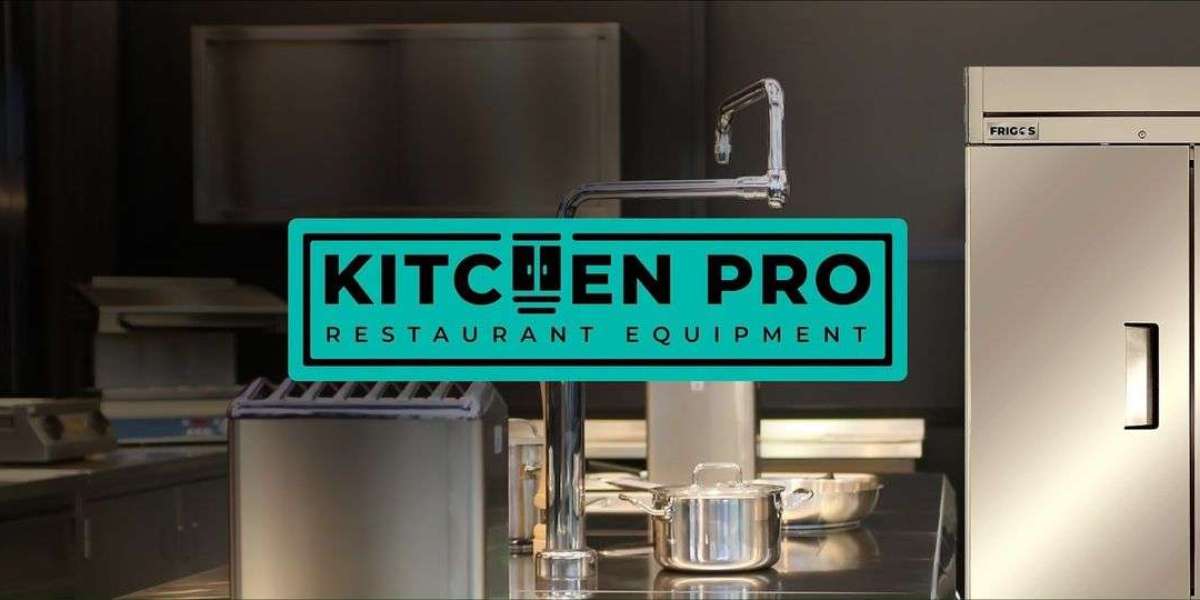Opening a restaurant involves translating your culinary vision into a functional kitchen equipped to handle the demands of daily operations. Choosing the right restaurant equipment is pivotal to achieving efficiency, maintaining quality, and ensuring the satisfaction of both your kitchen staff and diners. Here’s a comprehensive guide to selecting essential restaurant equipment with a focus on the Kitchen Pro approach.
Designing Your Kitchen Layout
Before purchasing equipment, consider your kitchen's layout and workflow. A well-designed kitchen optimizes space and promotes efficiency. Divide your kitchen into designated areas for cooking, preparation, refrigeration, and washing. Ensure each area is equipped with appropriate utilities such as electrical outlets, water connections, and ventilation systems. This layout not only enhances productivity but also supports seamless collaboration among your kitchen team.
Essential pro restaurant equipment
Cooking Equipment: The centerpiece of your kitchen, cooking equipment should be chosen based on your menu and cooking techniques. Invest in high-quality ranges, grills, fryers, and ovens designed for commercial use. Consider features like temperature control, energy efficiency, and ease of cleaning to streamline operations and maintain consistency in food preparation.
Refrigeration Units: Proper refrigeration is critical for storing ingredients safely and maintaining freshness. Choose refrigerators and freezers that offer sufficient storage capacity and precise temperature control. Walk-in coolers are ideal for bulk storage, while reach-in units provide easy access to frequently used items. Opt for models with durable construction and energy-efficient technology to minimize operating costs.
Preparation Stations: Efficient prep stations are essential for organizing workflow and reducing preparation time. Stainless steel worktables with integrated sinks and cutting boards provide ample space for food prep and cleanup. Equip your stations with essential tools such as knives, mixers, and food processors to enhance productivity and ensure consistent food quality.
Kitchen Pro Appliances
Ventilation Systems: A reliable ventilation system is crucial for maintaining air quality and removing excess heat, grease, and odors from the kitchen. Install hood vents above cooking areas to improve ventilation and create a comfortable working environment for your staff. Choose systems that comply with local health and safety regulations to ensure a safe dining experience for your patrons.
Dishwashing Stations: Cleanliness is paramount in a restaurant kitchen. Invest in commercial dishwashers equipped to handle high volumes of dishes, utensils, and glassware efficiently. Consider models with multiple wash cycles and sanitizing options to meet hygiene standards and minimize manual labor for your staff.
Specialized Equipment: Depending on your menu and culinary concept, you may require specialized equipment such as pizza ovens, sous-vide machines, or pasta makers. Tailor your equipment selection to your unique offerings to enhance menu versatility and operational efficiency.
Ensuring Efficiency and Compliance
Storage Solutions: Organized storage is essential for maintaining inventory control and minimizing food waste. Utilize shelving units, storage bins, and labeled containers to keep ingredients organized and easily accessible. Implement a first-in, first-out (FIFO) system to ensure freshness and reduce the risk of spoilage.
Safety Standards: Prioritize equipment that meets safety standards specific to commercial kitchens. Train your staff on proper equipment usage and maintenance to prevent accidents and ensure equipment longevity. Conduct regular inspections and maintenance checks to identify potential hazards and address them promptly.
Making Informed Investments
Quality and Durability: When selecting restaurant equipment, prioritize quality and durability over price. High-quality equipment may require a higher initial investment but offers reliability and longevity, reducing long-term costs associated with repairs and replacements.
Energy Efficiency: Choose energy-efficient appliances certified by ENERGY STAR® to minimize utility costs and reduce your restaurant's environmental impact. Look for equipment with features such as programmable settings and standby modes to optimize energy consumption during off-peak hours.
Conclusion
Equipping your restaurant kitchen with essential equipment is a foundational step in bringing your culinary vision to life. By carefully selecting equipment that enhances efficiency, ensures food safety, and supports your menu's unique requirements, you can create a kitchen environment conducive to creativity and operational success. Whether you're launching a new restaurant or upgrading an existing kitchen, the Kitchen Pro approach emphasizes functionality, quality, and compliance to set your establishment up for long-term success in the competitive hospitality industry.








